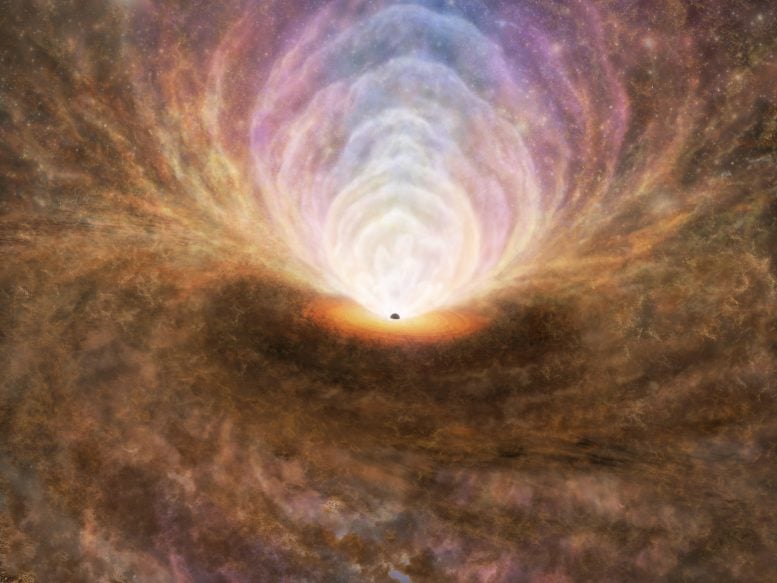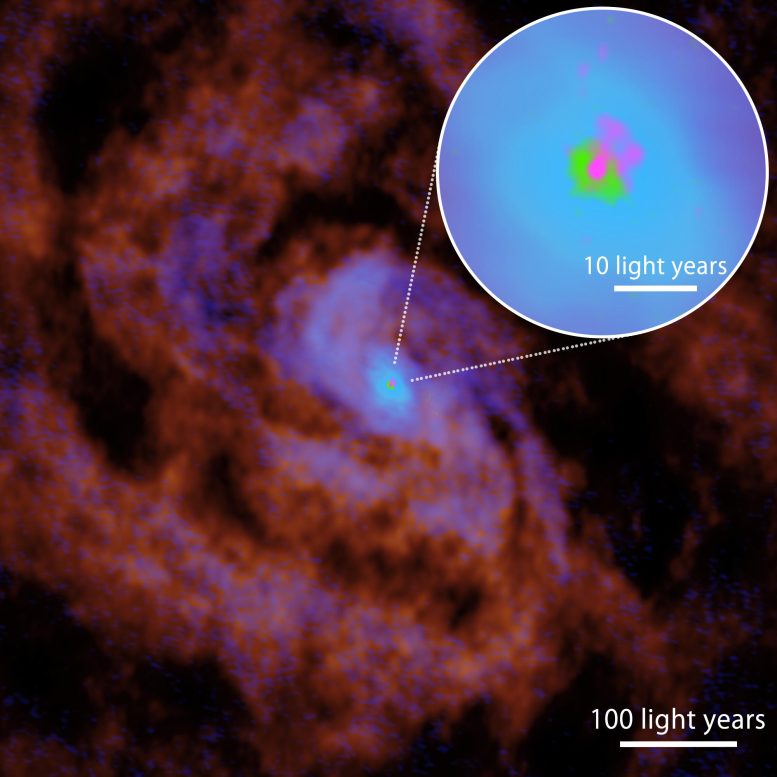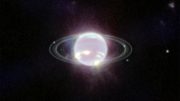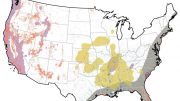
An imaginary diagram of the interstellar medium distribution of active galactic nuclei based on the current observation results. High-density molecular gas from the galaxy flows along the disk surface toward the black hole. The energy generated by the high temperature of the material accumulated around the black hole destroys the molecular gas and transforms it into atoms and plasma. Most of these multiphase interstellar materials are jets flowing outward from the galactic center (mainly plasma jets are generated directly above the disk, and mainly atomic and molecular jets are generated diagonally). However, we found that most of the particles return to the disk like a fountain. Credit: ALMA (ESO/NAOJ/NRAO), T. Izumi et al.
Recent advancements in astrophysics have led to groundbreaking observations of the gas flows surrounding supermassive black holes. These observations, conducted at a remarkably detailed light-year scale, have revealed crucial insights into the behavior of these cosmic giants. Notably, researchers have discovered that while a significant amount of gas is drawn towards these black holes, only a small fraction – about 3 percent – is actually consumed. The rest of the gas is ejected and then recycled back into the host galaxy.
Not all of the matter which falls towards a black hole is absorbed, some of it is ejected as outflows. But the ratio of the matter that the black hole “eats,” and the amount “dropped” has been difficult to measure.
An international research team led by Takuma Izumi, an assistant professor at the National Astronomical Observatory of Japan, used the Atacama Large Millimeter/submillimeter Array (ALMA) to observe the supermassive black hole in the Circinus Galaxy, located 14 million light-years away in the direction of the constellation Circinus. This black hole is known to be actively feeding.

The central region of the Circinus Galaxy observed with ALMA. Carbon monoxide (CO; indicating the presence of medium-density molecular gas) is shown in red; atomic carbon (C; indicating the presence of atomic gas) in blue; hydrogen cyanide (HCN; indicating the presence of high density molecular gas) in green; and the hydrogen recombination line (H36α; indicating the presence of ionized gas) in pink. The size of the central dense gas disk (green) is approximately 6 light-years. The plasma outflow travels almost perpendicular to the disk. Credit: ALMA (ESO/NAOJ/NRAO), T. Izumi et al.
ALMA’s Role in Unveiling Black Hole Mysteries
Thanks to ALMA’s high resolution, the team was the first in the world to measure the amount of inflow and outflow down to a scale of a few light-years around the black hole. By measuring the flows of gasses in different states (molecular, atomic, and plasma) the team was able to determine the overall efficiency of black hole feeding and found that it was only about 3 percent. The team also confirmed that gravitational instability is driving the inflow.
Analysis also showed that the bulk of the expelled outflows are not fast enough to escape the galaxy and be lost. They are recycled back into the circumnuclear regions around the black hole, and start to slowly fall towards the black hole again.
Reference: “Supermassive black hole feeding and feedback observed on subparsec scales” by Takuma Izumi, Keiichi Wada, Masatoshi Imanishi, Kouichiro Nakanishi, Kotaro Kohno, Yuki Kudoh, Taiki Kawamuro, Shunsuke Baba, Naoki Matsumoto, Yutaka Fujita and Konrad R. W. Tristram, 2 November 2023, Science.
DOI: 10.1126/science.adf0569
The study was funded by the National Astronomical Observatory of Japan and the Japan Society for the Promotion of Science.









Nothing gets eaten without it being evacuated. In other words where does the matter that is absorbed go behind the black hole? Or does every thing become dense and non transmitting.